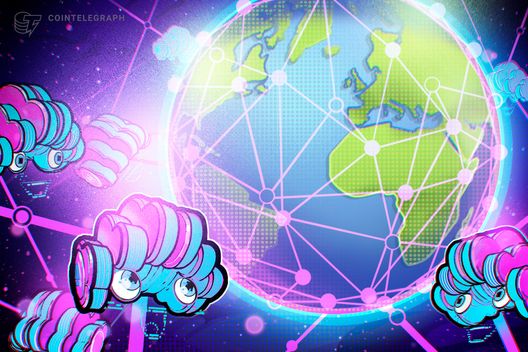
Opinion by: Gaurav Sharma, CEO of io.net
Artificial intelligence may be in its nascent phase, but it has already fostered significant scientific and technological advancements globally. Unfortunately, these advancements have introduced a pressing issue: the alarming centralization of AI.
According to Forbes’ 2025 list of the top 50 private AI firms, all are located in developed nations, with a staggering 80% in the US.
AI remains heavily biased towards well-funded tech behemoths in the developed world.
For many in emerging markets, the threshold to join the AI revolution is unmanageable. We need to ensure that innovation and AI development are within reach for a diverse array of projects.
The imbalance in AI access
At the core of the issue is access to computational resources. Training and deploying expansive AI models necessitates robust GPU power. Supply has not kept pace, causing prices for Nvidia’s H100 chips to exceed $30,000.
An ambitious AI startup might allocate 80% or more of its funding to compute—resources that could otherwise be invested in R&D or talent. Well-capitalized tech giants may amass billions to secure these resources. The wider world cannot compete.
The ramifications are extensive. AI-driven innovations risk becoming monopolized, dominated by a select few corporations and nations. Promising AI applications in agriculture, education, or healthcare within developing countries may never materialize—not due to a lack of talent but because of restricted access to computational resources.
On a geopolitical level, the undersupply of computational resources is beginning to parallel that of oil or silicon. Nations lacking sovereign access to compute will have to import it, creating dependencies on countries that may not align with their national goals and exposing them to foreign energy and real estate markets. These dependencies jeopardize economic competitiveness and national security.
The dangers of centralizing AI influence
If access to compute continues to be concentrated in developed nations, so will the resulting influence.
Cutting-edge AI technology, spanning LLMs to diffusion models, will be shaped by a narrow range of perspectives, limiting diversity and embedding systemic risks. Developing nations might find themselves excluded from both contributing to and benefiting from the technology that shapes the global economy.
Centralization guarantees that disproportionate returns benefit those with privileged access, sidelining smaller entities, often those creating locally relevant tools. Over time, the barriers to competing in the AI sector could evolve into a destabilizing oligopoly, effectively locking out the developing world from a pivotal industrial transformation. Concentrated control over infrastructure has consistently led to distortions, and AI will be no exception.
Balancing the scales with decentralized compute
The remedy for the challenges of accessibility and centralization is remarkably straightforward: compute marketplaces bolstered by blockchain technology. Just as Uber made idle cars available and Airbnb unlocked spare rooms, decentralized compute marketplaces unlock underutilized hardware. This results in reduced prices and a more varied and resilient ecosystem of suppliers and consumers.
Related: Bitcoin network used to secure local GOP convention election results
Globally, millions of GPUs remain idle in data centers, enterprises, universities, and homes. By aggregating these GPUs into on-demand clusters via blockchain, underused hardware becomes available at a fraction of centralized computing costs. Startups in lower-income nations can now scale AI workloads, no longer hindered by the capital advantages of industry leaders.
Blockchain’s critical role
Without blockchain, this model would not be feasible. Tokens function as the coordination and trust layer, aligning incentives across decentralized physical infrastructure networks (DePINs). Leading DePINs necessitate that compute suppliers stake tokens to encourage reliability, with penalties for downtime. Developers pay using tokens, allowing for seamless settlement across borders.
For hardware suppliers, tokenized rewards foster fairer economics: compensating compute owners based on usage, providing previously inaccessible revenue without compromising their core objectives. For developers, access to more affordable compute encourages participation and innovation in AI. This generates a virtuous cycle—more participants in the decentralized compute market drive prices lower and availability higher.
Addressing the challenges
Some critics have claimed that decentralized compute lacks the performance of hyperscalers, pointing to issues with latency and quality. The truth is rather different. DePINs provide competitive performance across latency, concurrency, and throughput. Techniques such as smart workload routing, mesh networking, and tokenized incentives for high availability help maintain and dynamically optimize performance according to workload demands.
Additionally, certain DePINs have developed transparent network explorers, enabling developers and investors to verify performance claims in real-time. These mechanisms further enhance the reliability and cost-effectiveness of DePINs compared to traditional providers.
DePINs also showcase greater diversity than hyperscaler offerings. Over 13 million devices are currently online, allowing developers to access a wide range of hardware and find optimal tools for their AI projects, from high-performance cloud-grade GPUs to specialized edge devices.
A level playing field for AI
We are within a narrow timeframe to shape the technological landscape for future generations. Although many US and Chinese companies may have gained a lead, decentralized compute marketplaces present an encouraging alternative. By lowering costs and increasing accessibility, startups, scale-ups, researchers, and enterprises worldwide can compete on a more equal footing. Emerging economies will have the opportunity to create models tailored to their languages, healthcare systems, cultural beliefs, and financial requirements.
The question is not whether decentralization is vital, but how to engage developers globally in this opportunity while simultaneously expanding the number of companies listing their excess compute on DePINs. Only by decentralizing compute can AI become genuinely accessible and benefit a wider audience, rather than merely reinforcing entrenched oligopolies.
Opinion by: Gaurav Sharma, CEO of io.net.
This article serves general information purposes and is not intended and should not be construed as legal or investment advice. The views, thoughts, and opinions expressed herein are solely those of the author and do not necessarily reflect or represent the views and opinions of Cointelegraph.

